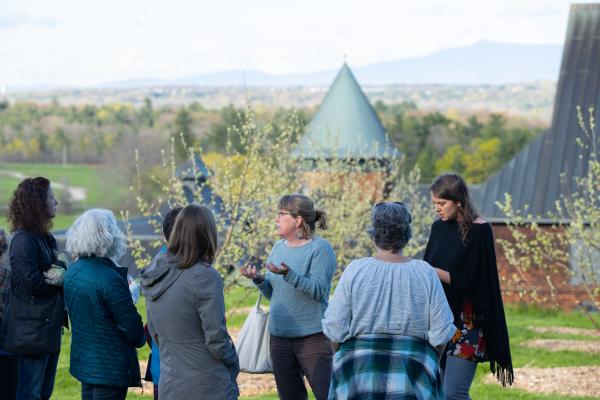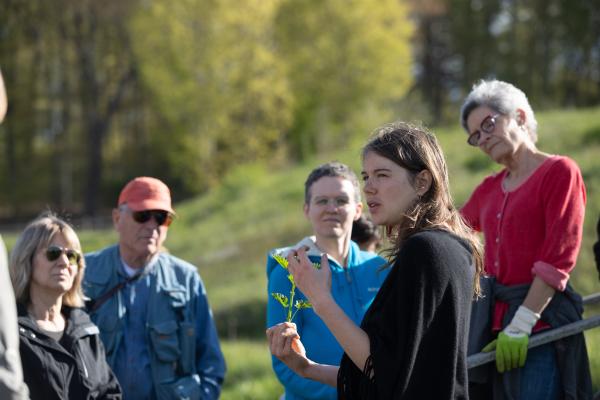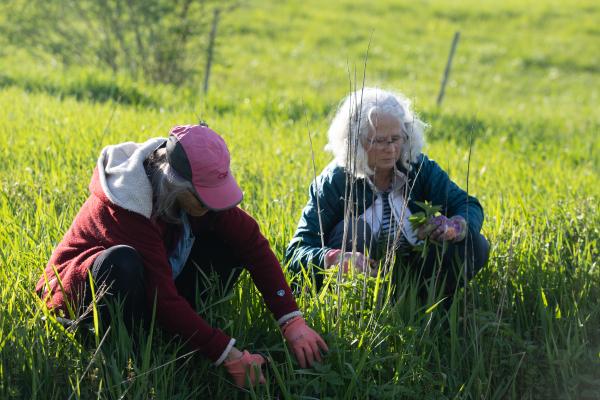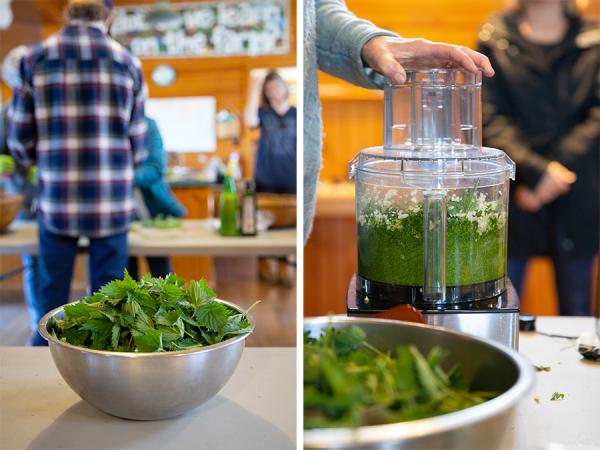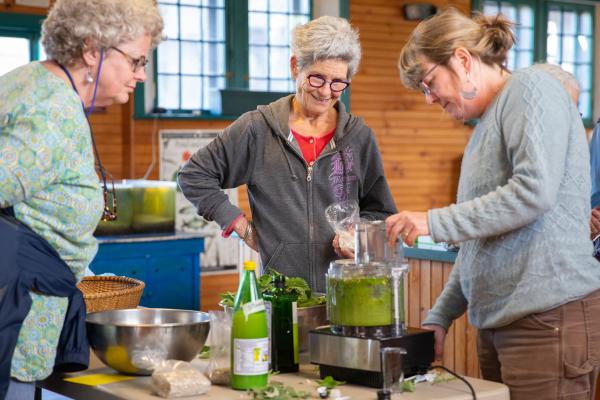This article was originally posted May 29, 2019.
Pesto-making in Vermont tends to be a late summer activity, when all of our herbs are growing in at once and need to be trimmed back before the leaves are overgrown and bitter. But Spoonful Herbals’ Kara Buchanan and Katherine Elmer have a different idea: get outside now and wildcraft the abundance of green leaves available in the spring and early summer. Katherine explains, “We’re a big proponent of teaching people how to eat their invasive plants, and we want to get you out there and making food from the land well before your basil grows in.”
On a perfect spring evening, our collaborative program with Spoonful Herbals, Weed Walk and Nettle Pesto Making, gathered participants to the Farm to harvest from the landscape and prepare a wildcrafted pesto together.
Nettles were the main source of greens. Although often considered a nuisance, the compounds that create the itchy, burning sensation you feel when brushing up against stinging nettle actually offer a range of health benefits. The formic acid and serotonin in these stinging hairs are powerful anti-allergens and offer relief to spring allergy sufferers. Nettles are best handled with gardening gloves, but if you’re careful to not touch the leaves, you can harvest them with bare hands. The nettle’s mineral-rich leaves supply an abundance of calcium, iron, and protein. If the nettle leaves are dried, blanched or pureed VERY thoroughly, the sting is removed and they are very safe and nutritious to eat.
Below, Kara and Katherine share their “loose recipe open to interpretation and flexibility” to serve you through the summer months based on whatever is growing in (and beyond!) your garden.
Spoonful Herbals “Weeds & Greens” Basic Pesto
Makes one quart.
Ingredients
- 4C greens (In this case, we used fresh, but well pureed, nettle leaves. You can also blanch the leaves in boiling water for a minute to eliminate their sting (in that case, thoroughly drain the leaves afterwards). Arugula, spinach, lamb’s quarters, chickweed, garlic mustard, violet leaf, or other herbs and wildcrafted leaves all work, too — experiment!)
- ½ - ¾C nuts or seeds (We used roasted sunflower seeds — a great way to accommodate for nut allergies — but you can try any nut. Pine nuts are most traditional, and cashews lend an exceptionally creamy texture.)
- ½ - 1C olive oil
- 4 - 6 cloves garlic (Try scallions, chives, or garlic scapes, too)
- Lemon juice and salt to taste (The zest can also be used)
- Optional: add grated parmesan or other hard cheeses
Directions
Puree all ingredients thoroughly in a food processor to a desired consistency, adding more oil as needed to keep processor moving. Be sure to process very well if using fresh nettle.
Spoonful Herbals is the collaborative effort of community herbalists and educators Katherine Elmer and Kara Buchanan. They offer an annual Herbal CSA (accepting membership now), a six-month Community Herbalism Apprenticeship program, and a volunteer Herb Mob program. Learn more about identifying wild edibles and their benefits on the Farm through our Farm to Medicine Cabinet series.

